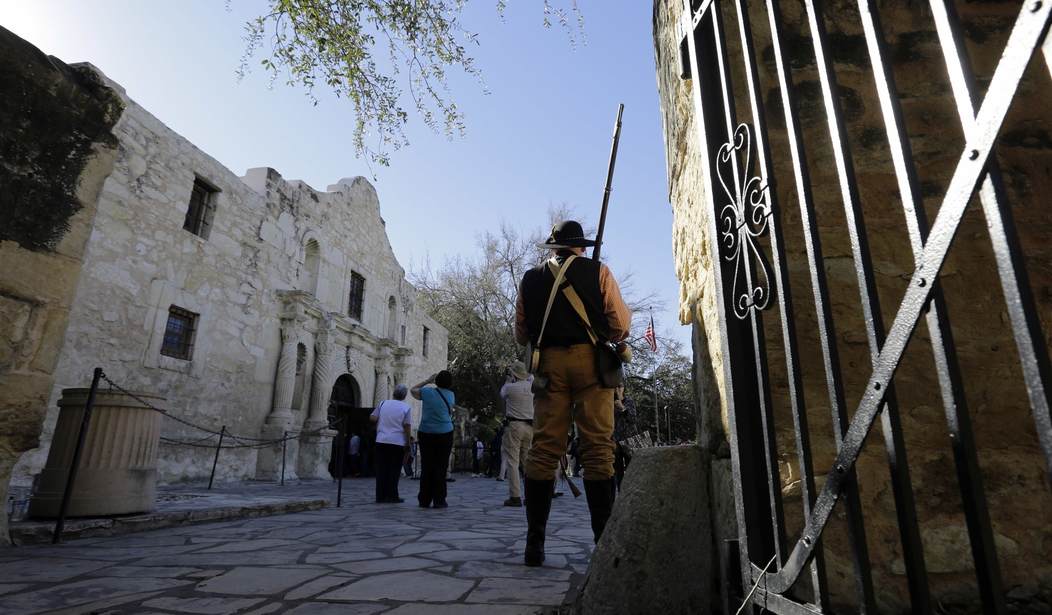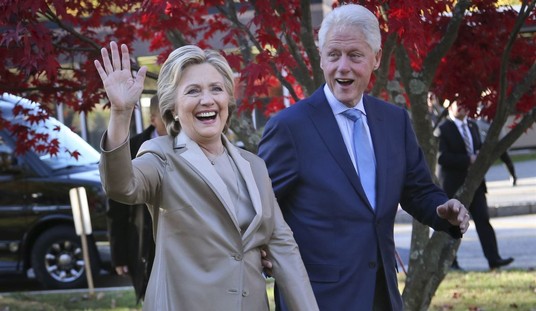The new book Forget the Alamo is making waves with its claims that the Texas Revolution was a war to preserve slavery, and that the Alamo defenders weren’t brave. I’ve already tackled the absurd and outrageous bravery claim. It’s beneath contempt.
The mainstream media thus far have not treated the book’s sensational claims with anything approaching fairness or skepticism. If you could capture a live shot of all of the articles and other media stories about Forget the Alamo they would look quite a bit like this:

Where is the independent inquiry? Where are the reporters who have covered the Alamo for years, who know that Forget the Alamo is false?
They say you tend to believe the news until it reports on something you know well. Then…you don’t anymore.
The authors claim that those of us who led the recent preservation and museum project during some of its more tumultuous times were pushing a “Heroic Anglo Narrative.” That would’ve been news to anyone who saw any of my 50+ presentations on the project all over Texas, from El Paso to Tyler and Laredo to Lubbock. Not only did we not push any such narrative at any point in the project, I personally highlighted the heroic Tejano role. I discussed two Tejano Alamo defenders in particular by name: Damacio Ximenez and Jose Toribio Losoya. Both men played key roles in the revolution, and both made courageous choices when they sided with the revolutionaries against Santa Anna’s dictatorship. By a quirk of fate, Ximenez was not confirmed as an Alamo defender until 1986 and therefore isn’t listed on the Cenotaph along with the other defenders. I spoke of him both for his deeds and in pointing out that the Cenotaph has errors that must be corrected. Damacio Ximenez deserves to have his name added to the Cenotaph. The original project would have honored him. Now that the Cenotaph will not be relocated, Ximenez may have to wait longer.
Both Ximenez and Losoya died at the Alamo for choosing to side with the rebellion. I mentioned them and the Tejano contribution in just about every presentation I gave anywhere in the state. The Tejanos are a key part of understanding what the revolution was and was not about.
Simply put: They were federalists who wanted the 1824 constitution restored. Santa Anna had tossed that aside when he became dictator. The Tejanos who fought for Texas refused to accept the yoke of tyranny. They were fighting for their own freedom. Not slavery.
Should their history be taught and celebrated more than it has been? Certainly. And that — not some fiction that lionizes one group of defenders or trashes them all as fools — is part of the story the Alamo project was hoping to tell.
So despite the book’s claim, there was no “Heroic Anglo Narrative,” at least not on my part or then Alamo CEO Douglass McDonald’s or the state’s or San Antonio’s. That was not a thing in our communications or plans. I was on the Alamo Master Plan Management Committee for a year. There was no narrative of the type the Forget authors claim. Full stop.
Regarding the Texas Revolution and its origins, the book claims the Texians were fighting for slavery. This is one of the book’s central claims. But it’s false. Slavery was an issue in the revolution. It was not the issue.
The Forget authors cherry-pick quotes from Stephen F. Austin and others on slavery’s role, but omit other writings on the subject.
In a letter dated April 30, 1836 — just after the victory at San Jacinto in which Texas won independence — Stephen F. Austin, the man widely regarded as the “father of Texas” or at least its colonial period under Mexico, wrote:
The men who are fighting in Texas, are the farmers, the settlers-they are not land speculators-Is it just to condemn them because persons living else where have speculated in Texas lands?-also some of your city folks seem to think that the Texas war is to establish negro slavery-This is as incorrect as the other idea-slavery has nothing to do with the causes, or the objects of this war.
In the same letter, Austin wrote:
The truth is we are fighting in Texas, for the cause of america & american principles-we are contending against Military usurpation and priestcraft-it is a war of barbarism & religious intolerance waged by Santana, & the clergy of Mexico, against civilization & liberty-Are we to be abandoned by our native countrymen because we are so near, and because we are purely American in birth, education, principles & everything?
The “Military usurpation” Austin mentions is Santa Anna’s dictatorship. Santa Anna did away with the federalist 1824 constitution, doing away with civil rights and state and local political power. He redrew Mexican states into military districts. Multiple Mexican states, not just Tejas y Coahuila, rose up against him as did many high-ranking Mexican officials. Santa Anna went to battle against an army led by the former governor of Zacatecas, Francisco Garcia Salinas, and defeated him in the spring of 1835. There were no slaves in Zacatecas.
Santa Anna’s next decision was a fateful one: He put the people there to the sword in a massacre. That was his first of three brutal massacres during the period. The other two were at the Alamo and Goliad — both in Texas, and both committed in the name of ethnically cleansing Texas of any Anglo resistance.
Santa Anna had the choice to be a George Washington figure for Mexico. Instead, he chose to be a Napoleonic monster.
All of this is factual and available to the authors of Forget and anyone else who wishes to research it.
To be fair, S.F. Austin was conflicted on slavery. Many were at the time. In a letter dated July 14, 1830, Austin wrote:
I am decidedly opposed in principle to slavery and I hope it never may be admitted in Texas tho I believe it ultimately will be for I doubt whether the people will be satisfied without it. My opinions on this subject are well known, & I have drawn upon myself the sarcasms of slave holders by expressing them.
This letter and the other Austin letters I’ve quoted were published in the Southwestern Historical Quarterly in 1985. They are therefore not a new discovery that was not available when Forget was written.
We look upon slavery in united horror now (except some multinational corporations, which benefit from slavery as it’s practiced in China). One of the Alamo defenders, Dr. Amos Pollard, was a known abolitionist. His story was available when Forget was written. Did the authors forget to include him?
In a Facebook post, former Texas Land Commissioner Jerry Patterson goes into detail on all of this and more, noting also that when Texas declared its independence on March 2, 1836, (four days before the Alamo fell and Santa Anna ordered it put to the sword), the revolutionaries didn’t even list slavery among their 20 causes to rebel.
When writing about the causes of the Texas Revolution, it would seem obvious to review and refer to the six general and fourteen specific causes for rebellion listed in the March 2, 1836 Texas Declaration of Independence. Not one of the 20 listed causes mentioned slavery. If slavery were a cause, I guess it didn’t rank any higher than #21. The authors should address this inconvenient fact, not ignore it.
Read Patterson’s entire post.
Here is the Texas Declaration of Independence, which was available online while the Forget authors were writing their book. Do a word search on it for “slavery” and you will find that it is never mentioned. One of its signers, by the way, was Lorenzo de Zavala. He was not Anglo. He was later elected the first vice president of the Republic of Texas.
Everything the Forget authors get wrong follows a pattern: They took history as kids, never delved any deeper, and are shocked! shocked! that things aren’t the way they remember from years gone by. And by the way they have the 1619 Project to mimic and a book to make money from. They’re shocked! that a 1960 movie didn’t get every detail right. Their shock appears to be feigned and follows the 1619 Project’s revisionist narrative in which all of our history and those who lived it must be torn down. The book is an exercise in statue desecration in print. Much of that is in turn based on simplistic ignorance of where much scholarship, and the Alamo’s own rendering of its story, has moved over the past several decades.
For instance, they call out the Travis “line in the sand” story and the manner of Crockett’s death — did he die as depicted in John Wayne’s movie, or did he surrender or was captured and then executed? The authors might have prevented their embarrassment had they merely gone to the Alamo and asked any tour guide about those two legendary events. They could have observed the endless debates about both among members of the Alamo Society in their publication, the Alamo Dispatch, or their Facebook page. The Alamo itself has been teaching both as nuanced for years, going back to when the Daughters of the Republic of Texas managed the site. The Wall of History that was installed decades ago behind the Long Barrack placed the Alamo into its historical context, as did the permanent exhibits in the Long Barrack itself. Both focused on 1836, as that’s the most important moment that happened on that ground, but both provided historical context to make sense of the battle, when it was fought, and why it was fought there.
None of this is new to anyone who has visited the Alamo in recent decades or done much homework at all on how the Alamo has presented its own story long before Phil Collins, the preservation/museum project, or any of that was on the scene.
Forget the Alamo’s treatment of Phil Collins is gravely unfair to him. Collins amassed his collection at his own expense and donated it to the people of Texas for free. As Patterson notes in his Facebook post, Collins’ donation is far from the only artifact collection the Alamo possesses. The site is landlocked in downtown San Antonio and lacks the space even to display the collection it had amassed prior to Collins’ free gift. His gift, which again as Patterson points out Collins himself was aware includes some provenance issues, added to the Alamo’s lack of display space problem, and highlighted a key fact about the site: for such an iconic place, it lacks a proper museum to tell its story. This lack of museum leaves visitors underwhelmed and confused, and much of the Alamo’s story untold. The Collins collection spurred the drive to build the Alamo that museum. The original and the “reset” project would both build that museum.
The authors of Forget the Alamo literally want the Alamo forgotten and its defenders and even Phil Collins to be smeared and dishonored. There is no reason to take their advice. Their book drips with unfairness.
This is on page 343:
From a practical perspective we must do something with Alamo Plaza it desperately needs a refresh. The spending $450 million to build a monument to white supremacy as personified by Bowie, Travis, and Crockett would be a grave injustice to a city that desperately needs better schools, jobs, and services. If Phil Collins wants to “Remember the Alamo”, he is welcome to do so in the privacy of his own home. The rest of us need to forget what we learned about the Alamo, embrace the truth, and celebrate all Texans.
This is deeply unfair. Crockett fought against impossible odds to keep Native Americans on their lands. Bowie’s wife was Tejano, as was his friend Juan Seguin. That’s white supremacy? Seguin didn’t think so. He called all the Alamo defenders “brothers” when he publicly eulogized them in 1837.
Companions in Arms!! These remains which we have the honor of carrying on our shoulders are those of the valiant heroes who died in the Alamo. Yes, my friends, they preferred to die a thousand times rather than submit themselves to the tyrant’s yoke. What a brilliant example! Deserving of being noted in the pages of history. The spirit of liberty appears to be looking out from its elevated throne with its pleasing mien and point to us saying: “There are your brothers, Travis, Bowie, Crockett, and others whose valor places them in the rank of my heroes.” Yes soldiers and fellow citizens, these are the worthy beings who, by the twists of fate, during the present campaign delivered their bodies to the ferocity of their enemies; who, barbarously treated as beasts, were bound by their feet and dragged to this spot, where they were reduced to ashes. The venerable remains of our worth companions as witnesses, I invite you to declare to the entire world, “Texas shall be free and independent or we shall perish in glorious combat.”
Seguin was Tejano, not Anglo.
Forget the Alamo is too full of errors and bias to be taken seriously.









Join the conversation as a VIP Member